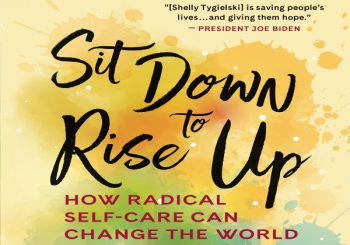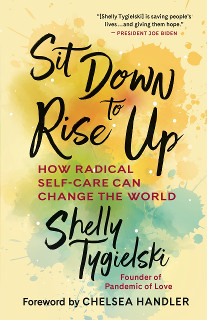Guest Writer for Wake Up World
Have you ever pruned or cut back a tree or a plant, then been shocked at how barren it looks? Only to then watch with amazement as each branch explodes with new life? I used to be reluctant to cut back any plant until someone told me that it is actually good for plants. It goes against everything that we think is “healthy.” How could inflicting such trauma and stress help plants grow and, yes, even thrive?
This is just a simple example of nature’s fight for survival. When we prune the plant or tree, it then puts even greater energy into growing more. Having been hacked to pieces, plants and trees could decide to give in, to just shrivel up and die. But they don’t. The same is true for us. When things get tough, we can choose to give in or to give more, to get bitter or to get better. We can choose to mirror nature and face our problems rather than run from them. We can choose to meet the stressors we are facing and use them to help us expand our capacity for resilience and perhaps even thrive as a result.
One morning while lying on the floor, feeling scared about the future after a troubling medical diagnosis, I thought about the blessings of this curse. I thought about Mary Oliver’s poem “The Uses of Sorrow”: “Someone I loved once gave me a box full of darkness. It took me years to understand that this, too, was a gift.” In my box full of darkness were the fossilized remains of a failed marriage, but I also had my son. My physical body was failing me, but it was also asking me to take note and remember to appreciate my health. My mental condition was frightening me, but it also presented an opportunity for me to step into courage.
My life had been dictated for so long by other people and forces — my parents, my husband, my religion, societal norms — and now I was free to make my own decision. This was my reckoning to choose, and I was consciously going to lean into it. I knew that change is one of the only certain things in our lives, and so I had that choice to make. I wanted to get better, and I knew that required me to give more. I wanted to try and accept this box of darkness and see it as a positive thing, a gift, as much as possible.
I sat up slowly. My dog was not ready to get up; he just rolled his head to the other side and continued to sleep. I walked into the kitchen to make myself a cup of coffee, and as the coffee machine was heating up the water, I saw my first decision point out of the corner of my eye. On the kitchen table, with a pencil as a placeholder between the pages, was my bright red journal, staring at me, perhaps even taunting me. Do the work, it whispered. I sat down, placed my warm mug to the left of me, and opened up the journal to a fresh page. I made a list of all the things I could explore to try and get healthy. I didn’t want to try another medication. My body was telling me something, leading me in a different direction — this I knew for sure.
My numbered list was just a free flow of all the things I knew were good for me, things like acupuncture, yoga, an anti-inflammatory diet, the beach, fresh air, meditation, girl time, me time, and long walks, to name a few. I also added other coping mechanisms, like saying no, asserting myself, and managing my time. Then, as I had before with my enormous to-do list, I chunked the information into what seemed like five natural categories:
- Work/professional
- Physical/fitness
- Emotional/mind
- Spiritual
- Relationships/community
Each category listed strategies or activities I enjoy that also would contribute to my well-being, items that were completely authentic to me. Some of these categories started to intersect, and I later learned that this is perfectly normal.
Sample Category: Emotional Self-Care
- Journal daily
- Meditate at least once daily for twenty minutes
- Develop/cultivate friendships that are supportive
- Do one outdoor pleasurable activity at least once a week
- Allow myself to safely experience my full range of emotions; identify them
- Meet socially with a support group/friends at least once a week
- Schedule time to DO NOTHING
Feeling satisfied with my progress that morning, I put my mug in the sink, went upstairs to wake my son and get him to school, and start my workday. I resolved to tackle a couple of things in my physical/fitness category during my break — like make an appointment for acupuncture and research foods that help reduce inflammation in autoimmune conditions. I didn’t know it then, but by memorializing my wellness strategies, I was actually putting together a formal self-care plan, also known as a coping plan.
Excerpted from the book from Sit Down to Rise Up. Copyright ©2021 by Shelly Tygielski. Printed with permission from New World Library.
Shelly Tygielski is the author of Sit Down to Rise Up and founder of the global grassroots mutual aid organization Pandemic of Love. Her work has been featured by over 100 media outlets, including CNN Heroes, The Kelly Clarkson Show, CBS This Morning, the New York Times, and the Washington Post. Visit her online at http://www.shellytygielski.com.

If you've ever found value in our articles, we'd greatly appreciate your support by purchasing Mindful Meditation Techniques for Kids - A Practical Guide for Adults to Empower Kids with the Gift of Inner Peace and Resilience for Life.
In the spirit of mindfulness, we encourage you to choose the paperback version. Delve into its pages away from screen glare and notifications, allowing yourself to fully immerse in the transformative practices within. The physical book enriches the learning process and serves as a tangible commitment to mindfulness, easily shared among family and friends.
Over the past few years, Wake Up World has faced significant online censorship, impacting our financial ability to stay online. Instead of soliciting donations, we're exploring win-win solutions with our readers to remain financially viable. Moving into book publishing, we hope to secure ongoing funds to continue our mission. With over 8,500 articles published in the past 13 years, we are committed to keeping our content free and accessible to everyone, without resorting to a paywall.








